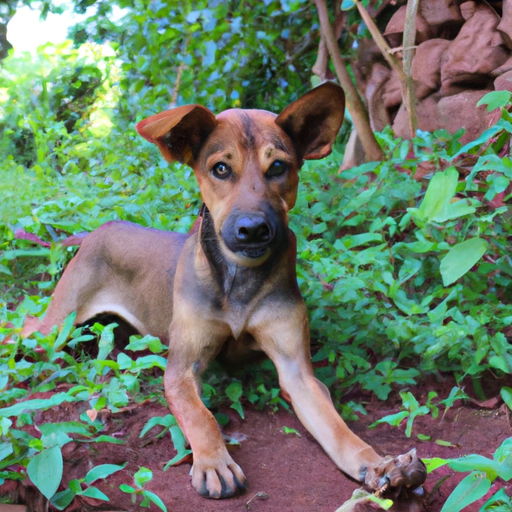As you relax on your couch, your canine companion walks up to you, looks straight into your eyes, and raises a paw. Does this scenario sound familiar? You’re not alone. Dog owners worldwide often find themselves wondering – why do dogs paw? This seemingly simple question opens up a fascinating exploration into the world of canine communication.
Table of Contents
- The Importance of Canine Communication
- Understanding Canine Pawing
- Pawing as a Learned Behavior
- Other Reasons Why Dogs Paw
- Ways to Respond to Pawing
- Frequently Asked Questions
Key Takeaways
- Dogs use pawing as a form of communication.
- Pawing can be a learned behavior or a natural instinct.
- Response to pawing should be based on the context and the dog’s overall behavior.
The Importance of Canine Communication
Dogs communicate with humans and other dogs in various ways, such as barking, whining, and body language. Pawing is one of these communication methods, often used to convey a specific need or desire. Understanding their language is crucial for fostering a healthy relationship with your furry friend.
Understanding Canine Pawing
Dogs paw for a variety of reasons. Here are a few common motivations behind this behavior:
- Seeking Attention: Similar to a child tugging at your sleeve, dogs often use pawing to get your attention. They might want to play, go for a walk, or simply crave your affection.
- Showing Submission: In the canine world, pawing can also be a sign of submission. A dog might use this gesture to show they pose no threat to another dog or human.
- Expressing Discomfort: Dogs may paw at their bodies or faces when they’re feeling discomfort, perhaps due to a physical ailment or an irritant like a flea.
Pawing as a Learned Behavior
Interestingly, pawing can also be a learned behavior. Dogs are intelligent animals, capable of understanding cause and effect. If your dog paws at you and you respond by petting them or giving them a treat, they’re likely to repeat this behavior. This is also a common method used by dogs to train their owners!
Other Reasons Why Dogs Paw
Pawing isn’t always a call for attention or a sign of discomfort. Dogs may also paw out of curiosity, to initiate play, or to express anxiety. It’s essential to observe the context and any accompanying behavior to accurately interpret your dog’s pawing.
Ways to Respond to Pawing
Your reaction to your dog’s pawing should depend on the message they’re trying to convey:
- If your dog is seeking attention, try to determine what they need. Do they seem eager to play? Are they hungry? Addressing their needs can help reinforce positive communication.
- If your dog is showing submission, reassure them of your affection and that they’re not under any threat.
- If your dog is pawing due to discomfort, try to identify the source of the discomfort. If it’s something you can’t address yourself, consider seeking veterinary care.
Frequently Asked Questions
1. Why does my dog paw at me when I pet them?
Your dog may be trying to “pet you back” as a sign of affection or submission.
2. Is pawing a sign of dominance in dogs?
Not necessarily. While some behaviors can indicate dominance, pawing is typically used for communication, not assertion of status.
3. Should I discourage my dog from pawing?
It depends on the context. If your dog’s pawing is causing harm or becoming disruptive, you may want to gently discourage it and redirect their energy elsewhere.
4. Why does my dog paw at their face?
This could indicate discomfort, possibly due to a health issue. If your dog frequently paws at their face, it might be a good idea to get them checked by a vet.
Unraveling the mystery of why dogs paw can enhance your bond with your canine companion as you learn to understand and respond to their unique ways of communication. Remember, every dog is different, and what holds true for one might not apply to another. Stay observant, patient, and open to learning from your furry friend. They have more to say than you might think!



